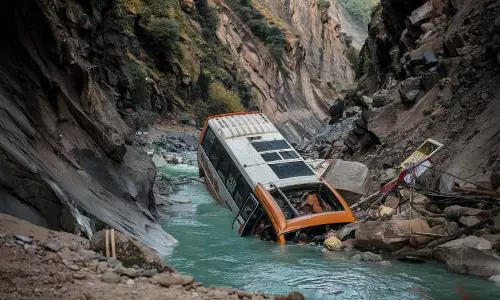
Total solar eclipse 2024: Why India will not witness this rare celestial event
text_fieldsThe upcoming total solar eclipse on Monday, April 8, marks a significant celestial occurrence where the Moon passes directly between the Earth and the Sun, casting a shadow on Earth's surface.
This event, the first solar eclipse of 2024 following the recent Lunar Eclipse on March 25, is anticipated to bring about various unusual phenomena, including changes in animal behavior and alterations in cloud activity.
Scheduled to traverse North America, the eclipse's path will cover Mexico, the United States, and Canada. However, India will not have visibility of this event. Reports indicate that the next solar eclipse visible in India will occur in 2031, specifically on May 21, featuring an Annular Solar Eclipse known as a 'ring of fire' eclipse.
While the total solar eclipse is estimated to last about two and a half hours in total, the moment of totality, where the Sun is fully obscured by the Moon, will only endure for approximately four minutes. According to NASA, the peak duration of total darkness during the eclipse is projected to be up to 4 minutes and 27 seconds.
India will not witness the total solar eclipse because of the eclipse's path of totality.
The path of totality refers to the narrow geographic area on Earth's surface where a total solar eclipse can be observed. During a total solar eclipse, the Moon completely blocks the Sun, casting a shadow on the Earth. Within the path of totality, observers experience moments of complete darkness known as totality, allowing them to see the Sun's corona, the outer atmosphere that is normally invisible due to the Sun's brightness.
The path of totality is determined by the geometry of the Earth-Moon-Sun system during the eclipse. It depends on factors such as the Moon's position in its orbit around the Earth, the Earth's rotation, and the tilt of the Earth's axis. As the Moon's shadow moves across the Earth's surface during the eclipse, it creates a narrow band where the total eclipse is visible.
The width of the path of totality varies depending on the distance between the Earth and the Moon, as well as the relative sizes of the Moon and the Sun. It can range from just a few kilometers to over 200 kilometers (about 125 miles).
Outside the path of totality, observers may experience a partial solar eclipse, where only part of the Sun is obscured by the Moon.
The path of totality for a specific eclipse is calculated and predicted by astronomers using sophisticated computer models based on precise measurements of the positions and orbits of celestial bodies.






















